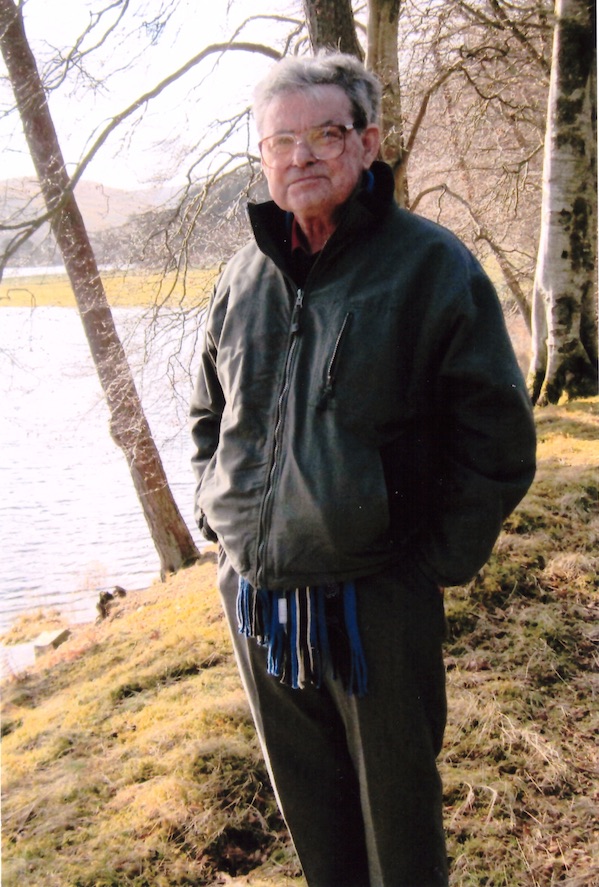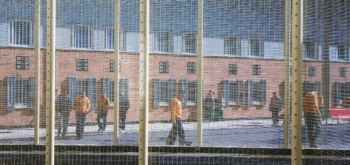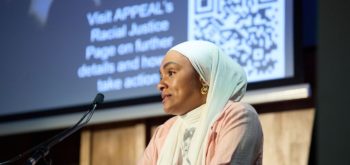[contextly_auto_sidebar id=”jLt0jcHW19LutXzQhPlLf8APYym6YynH”]
 Noel Hartnett, a retired deputy headteacher, lived in what should have been peaceful obscurity. But though he still found time to indulge his love of tinkering with internal combustion engines, his life was dominated for many years by a unique struggle for justice. By the time he died, aged 72, on 22 March 2015, I had known him for nearly three years. I wish I’d told him to his face what I thought and still think: that he was an unsung hero.
Noel Hartnett, a retired deputy headteacher, lived in what should have been peaceful obscurity. But though he still found time to indulge his love of tinkering with internal combustion engines, his life was dominated for many years by a unique struggle for justice. By the time he died, aged 72, on 22 March 2015, I had known him for nearly three years. I wish I’d told him to his face what I thought and still think: that he was an unsung hero.
His fight took place in an arena where opposing the dominant legal and cultural narrative will make one few friends: the alleged ‘historic’ sexual and physical abuse of children in residential institutions.
This is an era when the most lurid, uncorroborated claims of this nature will be disseminated widely and given great prominence by the media, and adopted – apparently unquestioningly – by both the police and senior politicians. Noel Hartnett swam against this tide.
Through hard graft and diligent research, based on his own voluminous archive of documents, he was able to provide persuasive evidence that in the case of the long-defunct Humberside Community Home School where he had once worked, St William’s in Market Weighton, dozens of the so-called ‘victims’ who ‘came forward’ to make criminal and civil claims had either fabricated their allegations or were gravely mistaken. He cared deeply about justice. But he also cared about truth, although that meant he had to expose some who claimed to have suffered horrendous acts as liars.
The first consequence of Hartnett’s effort is that several of his former colleagues, who are innocent of any crime, have been spared the ordeal of a trial and possible wrongful conviction: his research persuaded the Crown Prosecution Service that there could be no basis for charging them. The second is that some of those who falsely claimed to be ‘victims’ may face charges themselves. The CPS is still deciding whether they should be charged with fraud, or attempting to pervert the course of justice.
The third and final consequence may be the most significant: a civil trial, due to begin on 15 May this year at the High Court in Leeds.
Since allegations of historic abuse in care homes and residential schools began to surface in many parts of the country in the early 1990s, there have been numerous class actions for compensation brought against those who operated these institutions or their successor bodies.
Hartnett always recognised that many of the complainants in such actions were telling the truth. He had himself, many years earlier, reported a colleague to the police after a St William’s inmate told him he was being abused. But Hartnett also knew that with the passage of time, discerning reality from fantasy or outright fabrication can be difficult. Often, institutions will have closed, or been taken over, perhaps several times; records will be incomplete or non-existent.
The result is that almost all historic abuse civil actions have until now been settled without a fight. In the words of a website run by a law firm that has handled dozens of historic abuse actions, ‘the prospect of going to court and reliving such emotional incidents can be extremely off-putting for people who could be entitled to compensation’. But potential clients need not worry, because ‘in most cases, it is possible to settle a claim without the need to go to court. More than 98% of child abuse compensation claims… are settled out of court, meaning that you won’t be expected to attend a court hearing at any stage of your claim.’
It looks as if the pending St William’s action will be different. After lengthy case management proceedings, the trial will involve eight ‘sample’ allegations out of a total of more than 200. It will see the defendants, the Roman Catholic diocese of Middlesbrough and the De La Salle Brotherhood which once ran St William’s, defend these claims on the basis they are bogus, and that the abuse they allege simply did not occur. That this trial is about to take place is largely down to Hartnett.
More than five years before he died, Noel Hartnett was told he had just 18 months to live. He had pulmonary fibrosis, a degenerative lung condition, that meant he had to lug an oxygen tank around with him, even when lying beneath a car on the floor of his garage. But an experimental drug treatment prolonged his life, and though the sports he had once loved – including boxing – were obviously out of the question, his determination and capacity to contest the injustices he saw regarding St William’s were unaffected. By the time he fell ill, the saga had already been a long one.
St William’s had closed in 1994. Its pupils had been convicted of criminal offences, including murder, and sent there by the courts. It was staffed both by lay people and De La Salle Brothers, and usually had between 80 and 100 inmates. For many years, the Home Office cited St William’s as a showcase for what could be achieved with the most difficult youths, and it drew glowing reports from Her Majesty’s Inspectorate.
The first of no fewer than five police inquiries into child abuse at St William’s took place in 1982, when Hartnett, then the deputy headmaster, reported to officers that a boy had been to see him in a state of distress, and had described being sexually assaulted by a senior member of staff. (This individual cannot be named for legal reasons, he currently faces fresh, further charges.) For Hartnett, going to the police took courage. He told me: ‘I informed my superiors what I intended to do, and when I did so, I was told I could be fired.’
The police took a statement from the boy, but he later withdrew it, and the case was dropped. It was not for a further 11 years that the same pupil, by now an adult, contacted the police again. Other former pupils also came forward, and in 1993, the staff member originally accused by Hartnett pleaded guilty to several offences and was jailed for seven years.
Eight years later, in 2001, Operation Aldgate, a much bigger inquiry into St William’s, began, triggered by news reports of abuse at a different institution. This time, the Humberside police did not wait for alleged victims to approach them. Instead, they placed advertisements in the local media, and tracked down former pupils, encouraging them to make allegations against members of staff – the method known as a ‘trawl’. Many had gone on to commit serious crimes as adults, and were in prison when they were interviewed by police.
By 2001, trawl investigations had taken place in many parts of the country, and had been given widespread publicity. It was well-known, especially among prisoners, that those who said they had been abused as children could claim large sums in compensation. The criminal courts, following the ruling of the House of Lords in DPP versus P, had come to accept multiple allegations as mutually corroborative, even when they were not ‘strikingly similar’. In 2002, the Commons Select Committee on Home Affairs issued an authoritative report which warned that the combination of this judgment and the lure of compensation was creating a ‘new breed’ of miscarriages of justice. Among the committee’s members who signed the report was a youthful Tory MP, David Cameron.
In any event, Operation Aldgate was a fiasco. Five others were charged, but the only man to be convicted of anything was the teacher first accused by Hartnett, who was convicted and imprisoned again. The others were acquitted of all charges. One was Noel Hartnett, who had been falsely accused of physical, although not sexual, abuse. Some of the Aldgate accusers were suffering from serious mental illness, and all had numerous convictions.
Hartnett and some of the others found not guilty complained about Operation Aldgate’s conduct, and the Independent Police Complaints Commission (IPCC) launched an inquiry of its own. Known as Operation Gullane, it was carried out by officers from West Yorkshire police. Its eventual report, which was issued in 2007, was damning, making 400 major criticisms.
Aldgate, the IPCC said, had not been ‘robust’. Officers had believed accusers’ stories without checking them, and had adopted an over-credulous ‘mindset’ which had led them to hound innocent people. There had been a ‘failure to pursue reasonable lines of inquiry which could have helped prove/disprove witness and suspect accounts’, and a ‘failure to seek corroboration in respect of allegations made’. The IPCC made 136 separate recommendations for future abuse inquiries nationally to ensure such mistakes were not repeated. Some were remarkably basic. For example, the police should always have a list showing when pupils and staff members had attended an institution, in order to be certain they were both there at the same time.
The IPCC warned:
‘[Police] must recognize that difficulties in being able to corroborate historic abuse offences may attract false allegations. Therefore it is imperative that a thorough investigation be completed at all times.’
The report was also highly critical of the risk that, perhaps inadvertently, solicitors who acted for several complainants in civil damages actions might create bogus criminal allegations, by fostering the sharing of false information.
Hartnett took these recommendations to heart. He also kept all the documents disclosed to himself and his innocent colleagues as a result of the Aldgate trials, including the St William’s day books, plans, staff and pupil registers, as well as the full, unpublished 3,000 page report of Operation Gullane. He did not realize then how soon these documents would be needed again.
In December 2004, when Operation Gullane was only just starting, an advertisement appeared in Inside Time, a newspaper published by a charitable trust which is distributed free to all prison inmates. Placed by David Greenwood, then of Jordans solicitors of Dewsbury, it asked: ‘Were you at St William’s care home 1970–88?’ The firm, it went on, was coordinating civil damages claims by former residents, and it was ‘important that potential claimants enforce their legal rights as soon as possible. Especially those who have been contacted by Operation Aldgate at Hull Central police station.’ This advert was the first of several published 2004–9. Greenwood, now at Switalskis, has published similar ads directed at former residents of other institutions.
The Inside Time advertisements worked. By 2010, Greenwood had obtained generous legal aid, launched the class action and had more than 100 clients, all claiming they had been horrifically abused, most of them sexually, at St William’s. The action had received extensive and entirely uncritical publicity in local media. That September, Greenwood contacted Humberside Police, saying that the action had generated fresh evidence of offences at St William’s, which ought to be investigated. The result was Operation Reno – a new investigation covering the same ground as Operation Aldgate. As with Operation Pallial in North Wales, which is going over the same territory explored by police investigations in the 1990s and the exhaustive public inquiry led by Sir Ronald Waterhouse, groundhog day had arrived.
As Operation Reno got underway, four of the men who had already been acquitted in trials arising from Operation Aldgate again found themselves suspects – including Noel Hartnett. But the allegations against them were now much more serious. For example, while Hartnett had been accused in 2004 only of physical abuse, it was now claimed he had committed multiple acts of the most extreme sexual assaults.
Ill as he was, Hartnett fought back. Lawyers acting for the Brotherhood had given him many of the statements served by Greenwood in respect of his civil compensation action, and asked him to analyse them. Adding these to the documents he already had enabled him to reach some devastating conclusions. In a total of 54 cases, he was able to provide persuasive evidence that those now making allegations could not be telling the truth. Some had not been at the school at the same time as their supposed abusers worked there: in some cases, there were gaps of many years. Others accused people who did not exist – and most worryingly, there were multiple allegations against a handful of the same fictitious individuals, suggesting they must have colluded in making false claims, or adopted bogus allegations supplied by some third party. Still others made claims which could easily be refuted from other, verifiable sources, such as medical records and plans of the school buildings. Some of those making new allegations had already been described as deeply unreliable in the full Operation Gullane report.
Hartnett was also able to analyse several versions of the same complainants’ statements. That meant he was able to show that the claims of some had grown steadily more lurid – apparently, because they believed that the more serious their allegations, the more compensation they would eventually be paid.
Thanks to the detailed, forensic memos that Hartnett composed, he and the others who had already been found not guilty in 2004 were told by the CPS there would be ‘no further action’ against them. However, by this time, they had lived for a further two years or 18 months under the cloud of being paedophilia suspects.
The personal toll exacted by this was great. Hartnett told me in 2012:
‘Lord McAlpine said that when he was falsely accused of sexual abuse that it “eats into your soul”. That describes my own feelings extremely well. My hobby is cars and I’ll be working underneath one in my garage and then, all over again, it hits me. It’s in my head the whole time. I’ve always believed in being open. I tell people that I’ve been a victim of falsehoods, but I still have a constant anxiety about the effect they’ve had on my family. The IPCC said the previous police inquiry had a “mindset” which meant they refused to believe the evidence that showed supposed abusers were innocent. But when I was interviewed again last year, one of the officers seemed to exhibit that mindset again. Now I’ve been formally cleared, but I want to deal with this decisively. I don’t want to spend the remaining years of my life waiting for yet another knock on the door.’
In the autumn of 2012, with several complainants now themselves being investigated for possible frauds, Greenwood advised his clients to stop cooperating with Operation Reno, the criminal inquiry which he had himself triggered. The immediate result was that 53 separate police case files, which had been close to completion, had to be withdrawn from consideration by the CPS. More than 20 full-time CID officers had been working for years on inquiries that had now proven futile. The cost, needless to say, was immense.
To date, three former St William’s staff have been charged as a result of Operation Reno – one of them the same man first accused by Hartnett in 1982. The other two continue to protest their innocence. Hartnett’s work will assist their defence posthumously.
As a journalist, I have been concerned with the dangers of false allegations of child abuse and the difficulty of contesting them since 2000, when I reported and presented a BBC Panorama programme, In the Name of the Children. This has earned me much abuse: I have been variously accused on the internet of protecting paedophiles and acting as a ‘fixer’ to protect Establishment figures from their deserved retribution. This, of course, is only a pale reflection of the living nightmare of facing false criminal allegations, as Noel Hartnett and many others have. Nevertheless, it is small wonder that there have been relatively few ready to champion this cause.
Among those who have, I must mention Bob Woffinden, the doyen of investigative journalists in the field of miscarriages of justice, Rosie Waterhouse, who earned her spurs by exposing the lies behind the great 1990s Satanic abuse panic, and above all the late Richard Webster, whose book, The Secret of Bryn Estyn (see here and www.richardwebster.net), published in 2006, remains required reading for anyone with an interest in this vexed and tortured subject.
Yet in all the time I have been involved, I have never met a man like Noel Hartnett. His lifelong friend, Cedric Sander, a retired headteacher and educationalist, told me after his death: ‘Noel just didn’t give in. If he saw something that was wrong, he would dig so deep until he revealed the truth. He just saw it as something he had to do.’
One has to wonder: if there were more Noel Hartnetts, with documentary archives such as his at their disposal, would the current new wave of child abuse hysteria have reached such a pitch? One can only hope that in time, as with the seventeenth century witch-hunts to which Richard Webster often compared these inquiries, we will recover our collective equilibrium and detachment. When that happens, Noel’s work and archive will once again prove to be a critically important resource.
He leaves four adult children and his partner Annie, who was at his side in Market Weighton throughout the protracted struggles of his latter years. I know they are as proud of him as I am.







